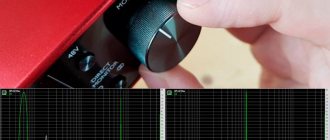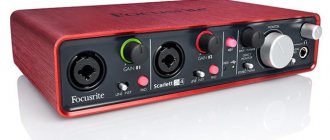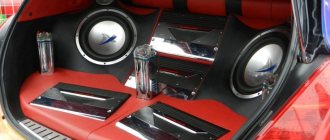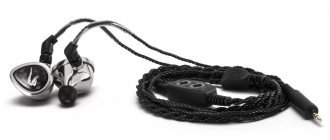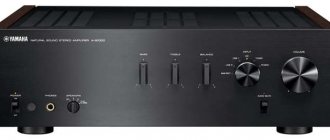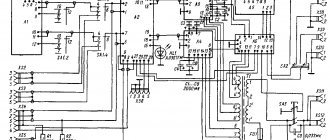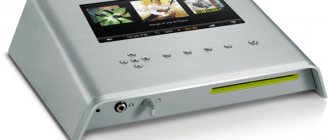High-resolution audio recordings are the choice of the most devoted fans of digital music. What is it, where can I get it and what is needed to listen to it?
Save and read later -
If you're even remotely interested in digital music (whether it's listening to CDs or streaming Spotify on your smartphone), you've probably come across the term "high-resolution audio," or "Hi-Res audio."
In recent years, the popularity of Hi-Res audio has been slowly but surely gaining momentum, fueled by the emergence of new components, streaming services and even smartphones that support this standard. Until recently, it was a niche segment for a narrow circle of initiates, but today everyone is trying to join it.
If you want to get the best possible music listening experience - or at least better sound quality - you should familiarize yourself with the concept of Hi-Res audio.
This prospect is a little scary because it involves many factors. What is Hi-Res Audio? What do all these formats and numbers mean? Where can I get high-quality files and on what devices can I play them? Finally, where to start?
Our guide to the world of Hi-Res audio will help you thoroughly understand this issue. After reading this material to the end, you will be armed with all the necessary knowledge and take the first step towards the magical world of better sound.
Unlike HD video, no universal standard has yet been developed for high-resolution audio. Digital Entertainment Group, Consumer Electronics Association and Th e Recording Academy, as well as major record companies, define it as follows: “A lossless audio file that contains a sound track over the entire frequency range in which it was mastered using quality equipment higher than CD."
Simply put, the term generally refers to recordings with a higher sample rate and/or bit depth than CD (i.e. 16-bit/44.1 kHz).
The sampling rate refers to how many times per second the signal is sampled as it converts from analog to digital. The higher the bit depth, the more accurate the signal measurement at the sample point, so moving from 16 bits to 24 bits can significantly improve quality.
Hi-Res audio formats typically have a sampling rate of 96 or 192 kHz at 24 bits. In addition, there are files with 44.1, 88.2 and 176.4 kHz.
What is Hi-Res
Hi-Res audio does not have a clear definition, like, for example, high-resolution video or photos.
The official description of the term, accepted by industry leaders, is Hi-Res: “These are lossless digital audio files that provide sound over the entire frequency range of the recording. To create the latter, music sources are used that are superior in quality to CDs. Such audio files can recreate the original vision of performers, producers and sound engineers.” In other words, Hi-Res can technically be considered any music that is better in sampling frequency and bit depth than CD audio (44.1 kHz / 16 bit). The minimum frequency response threshold for this is 96 kHz and 24 bits, although this is far from the limit and parameters of 192 kHz and 24 bits are found.
The Hi-Res logo itself on headphones, smartphones, players and other devices does not imply any exclusivity and only indicates that they are capable of reproducing sound in the designated ranges.
Logic of operation of a “serial” ADC (DAC)
In a serial ADC there is a comparator already familiar to us, which compares the reference signal (reference) with the measured one . Next there are differences in the operating logic.
A digital register (buffer memory) stores a digit equal to the value of the reference signal. After the next measurement of an analog signal by the comparator, it outputs the number 1 if the measurement was higher than the standard and 0 if it was lower. Then the reference signal becomes not a signal that is 2 times higher or lower, but a signal that is one higher or lower. At the same time, not a number equal to the standard is written to memory, but bit 1 if the measurement was greater or 0 if less.
In fact, we have a simpler serial logic (and circuit) of the ADC compared to parallel.
Instead of sequential approximation, it uses fixation (recording) of step-by-step approximation . To measure a range of 16 bits from 0 to 65535, we will need 65535 steps (not 16). Accordingly, for a 24-bit conversion we will need 16.7 million steps. At the output of such an ADC, a serial bit stream is recorded, in which the analog value of the sound wave intensity is equal to the “density” of the stream of ones and zeros. If there are more ones, then the voltage (intensity) is higher, and if there are zeros, it is lower. Everything is very simple.
6.1 Inverse digital-to-analog conversion, serial
The reverse digital-to-analog conversion (DAC) is also simple. At the output of a one-bit digital signal, there is a capacitor (capacitor), which is charged with zeros and ones to different amounts, depending on the density of zeros and ones. At the end after the capacitance there is a high-pass filter and an analog output.
Why is it needed and what does Hi-Res provide?
First of all, this standard is designed to ensure maximum quality of digital audio and the ability to accurately recreate music in the form in which it was conceived and recorded in the studio. Some services even provide just such studio files, which are usually labeled Studio Masters.
Due to the high resolution and more information contained in the file, it allows you to reproduce more details and nuances of the sound, which are simply cut off by algorithms during lossy compression. In Hi-Res, music lovers can hear the smallest shades of the phonogram, recording noise and everything that gives the track the very fullness and individuality that was laid down during mastering.
The easiest way to explain the benefit of high-resolution audio is in terms of bitrate. Everyone remembers how bad MP3 files sound at 128 kbps and what an improvement it is to increase the bitrate to 320 kbps. It’s easy to imagine how much higher the Hi-Res sound quality is, where the bitrate reaches 9,216 kbps.
And one more important point. Now all new releases are prepared in Hi-Res, and from this master copy they are converted into simpler formats, including CD. And this, in turn, entails distortions. Listening to the original in Hi‑Res allows you to get rid of them and get maximum sound fidelity.
Grab your phone
Fans of the mobile lifestyle should take note of the growing list of compatible smartphones, mainly flagship Android models such as the Samsung Galaxy S8, S8+ and LG V30 (this is the only model with MQA support so far). Apple iPhones do not officially support Hi-Res audio, although there are ways to achieve this.
In addition, there are specialized Hi-Res players - for example, various Sony Walkman models and Award-winning Astell & Kern players; Compared to smartphones, they have more memory and much better sound quality.
As for desktop solutions, the most logical option would be a Windows, Mac or Linux computer (after all, that's where you'll be downloading files); Just make sure your music playback software supports Hi-Res. For example, Apple iTunes does not have such compatibility, so for your MacBook you will have to download or buy an additional program - for example, Pure Music or Amarra.
You should not rely on the limited capabilities of the built-in DAC of your computer or smartphone. A desktop or USB DAC (such as the AudioQuest DragonFly Red or Chord Mojo) will provide maximum sound quality for Hi-Res files from devices whose audio circuits are not optimized for this task.
Insert a decent digital-to-analogue converter (DAC) between your source and headphones and the sound quality will improve immediately.
If you're dreaming of a full-fledged Hi-Fi system, you'll need a network music player with Hi-Res audio support - such as the Cambridge CXN or Arcam rPlay. They are especially good for systems based on NAS servers (Network Attached Storage, or network storage device - essentially a hard drive with a built-in processor; we wholeheartedly recommend this approach).
Which formats are suitable for Hi-Res
Since Hi-Res itself is not a format, but only a kind of specification indicating requirements, various types of audio files can be used as containers for audio transmission.
- WAV is an uncompressed format that is used by default for burning CDs. It boasts high sound quality, but at the same time has a very large file size.
- AIFF is another uncompressed format created by Apple as an alternative to WAV. It has better metadata support, but has the same enormous volume. It was not widely used.
- FLAC is the most popular lossless compression format, which is supported by most equipment and is considered the most preferred for Hi-Res. It has a good compression ratio - files take up almost half the space than uncompressed WAV.
- ALAC is a proprietary lossless compression format from Apple, which has high sampling characteristics and is almost a complete analogue of the previous one. It also compresses data in half.
- DSD is an uncompressed format used for recording on Super Audio CDs. It features a very high sampling frequency, reaching 5,644.8 kHz. Not very common.
- MQA is a relatively new compression format, introduced in 2014, that is most often used for streaming Hi-Res music. Supported on a limited number of devices.
What you need to listen to music in Hi‑Res
To experience the world of high-resolution music, you will need headphones with the appropriate frequency range and a playback device that supports Hi-Res.
You can use a computer with a special player and a DAC connected via USB. This combination easily connects both headphones and an amplifier with speakers. A PC is convenient for downloading and storing music that takes up a significant amount of space.
Another option is a Hi-Fi home network player that can play files from a flash drive, hard drive and home server, and also has clients for popular streaming services. You can listen to music through headphones or a stereo system, and control it from a smartphone or tablet.
For listening on the go, you will need a portable Hi-Fi player and good headphones. Such players have capacious storage and convenient control using buttons. Some models run Android, which also allows you to install clients for streaming services.
Using a smartphone is the most compromise, but also a possible option. Many Android flagships support Hi-Res and have built-in DACs, so all that remains is to choose good headphones. On iPhone and other gadgets, you will need to connect an external DAC and install a third-party player capable of decoding Hi-Res audio files. Of course, not only local listening will be available on smartphones, but also the use of streaming music service clients.
Popular manufacturers of Hi-Res acoustics
In order for users to choose reliable Hi-Res speakers, below is a rating of manufacturers of wired and wireless equipment.
| PLACE | Manufacturer | DESCRIPTION |
| 1 | Sony | A Japanese manufacturer that produces top-end Hi-Fi acoustics. In addition to acoustics, Sony also sells smartphones with Hirez; |
| 2 | Samsung | A Korean brand that uses new technologies in stereo production. Samsung is famous for its soundbars and powerful speakers; |
| 3 | Focal-JMLab | A French company that produces top-end Hi-Fi acoustics; |
| 4 | Yamaha | Japanese company; |
| 5 | Acurus | This brand is famous for amplifiers that are reliable and do not distort the sound; |
| 6 | AudioQuest | In addition to acoustics, AudioQuest also produces headphones with Hirez; |
| 7 | Avid Hi-Fi | The company sells both budget acoustics and expensive models; |
| 8 | Microlab | A brand that produces audio electronics and peripherals; |
| 9 | JBL | A leader in the speaker system market, whose technology has become synonymous with reference sound; |
| 10 | Sven | The brand sells both compact acoustics and sets of satellites and additional subwoofers. |
Where to download music in Hi-Res
Due to the impressive size of high-resolution audio files, music lovers prefer to download their favorite music from online stores. This guarantees the highest quality and convenient storage in your personal collection. Hi-Res audio comes in a variety of sources, containing almost everything that has ever been published. Here are the most popular ones.
- HDTracks is the most famous catalog where you can find time-tested classics, jazz, rock and other genres of music. There are various formats to choose from, but you can't buy individual tracks - only entire albums.
- 7digital is an extensive store with a huge selection of music in all genres. It features easy navigation and search, as well as a separate section for Hi‑Res. Audio files are presented in FLAC, you can buy entire albums or individual tracks. There are regional restrictions, you need to use a VPN.
- Qobuz is a French store, also only accessible via VPN. It has one of the largest catalogs, which presents music in all genres. Moreover, there are both releases from past years and the latest new items.
- Primephonic is the world's largest catalog of classical music with a very nice website and easy navigation. Provides a huge selection of songs with quality from CD to Hi-Res. A real find for lovers of the classics.
Wide support
Hi-Res audio formats are now supported by many other components - for example, hybrid DAC-amplifier-network player systems (Moon Neo Ace) or active speakers with all built-in electronics (KEF LS50 wireless), some multi-room systems (Bluesound) and AV receivers (Sony STR DN1080).
As always, we recommend choosing high-quality headphones or speakers that will allow you to fully appreciate the advantages of the format.
Now you are fully armed with theoretical knowledge, and it is logical to ask the question: where can you get all these wonderful compositions in Hi-Res formats?
Today, many websites offer the purchase of individual tracks and entire albums in various high-resolution audio formats. They are in the UK, US and EU; In some cases, there are regional purchasing restrictions.
Major labels such as Sony, Warner and Universal have given these services access to their vast archives of recordings, giving fans of quality music access to an audiophile's paradise.
When purchasing from any site, first check the format and sampling parameters of the files. You'll eventually find your favorite site, but even then, be sure to check the albums or songs you want from time to time - prices may be lower elsewhere.
Where to listen to Hi-Res music online
Streaming music in Hi-Res is not yet very developed, and the choice of platforms is small. In June, Apple will begin adding ALAC 192 kHz/24-bit tracks to the Apple Music library, but you'll need an external DAC and matching headphones to listen to them. Without additional equipment, the music quality will be limited to CD level.
Currently, Hi-Res streaming is only available on Tidal and the Qobuz store streaming service. Both are region-locked and work via VPN. Both platforms are available on mobile devices, computers and Hi-Fi equipment. As for quality, parity is observed here too - 192 kHz / 24 bit.
With a stretch, one can also recall Deezer, which is officially available in Russia. The service offers convenient streaming, but does not reach Hi-Res - the highest possible quality here is only CD (44.1 kHz / 16 bit). In fact, it's also pretty good for listening to music on the go.
